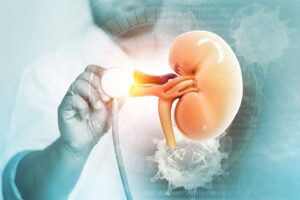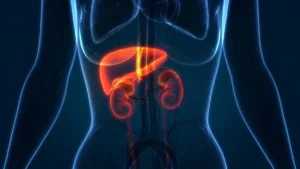Introduction
The number of people receiving kidney transplants who have end-stage renal disease (ESRD) is rising. Long-term allograft survival is generally stable, despite improvements in short-term allograft survival. The optimal way to care for individuals who return to dialysis after unsuccessful allografts is yet unknown. These patients are at a significant risk of dying because they have complex medical conditions and frequently return to dialysis with years of ESRD, several comorbid conditions, and immunosuppression-related adverse effects. It can be difficult to comprehend how immunosuppression is managed in this situation. Immunosuppression maintenance may raise the risk of cancer, infections, cardiovascular disease, and mortality, whereas stopping immunosuppression may increase sensitization and perhaps decrease the chance for retransplantation.
The administration of immunosuppression in patients with AF is poorly supported by evidence, and as a result, clinical practise patterns differ, which has an impact on the results reached from the retrospective data evaluation. Understanding the impact of immunosuppressive maintenance on outcomes following allograft failure (AF) was the study’s main objective. Because of our long-term follow-up programme following transplantation and the integrated dialysis clinic, we were in a unique position to carry out this study. We sought to ascertain the relationship between retransplantation, mortality following AF, immunosuppressive maintenance, and sensitization as assessed by computed panel reactive antibody (cPRA).
Methods
We performed a single-center retrospective study of patients transplanted from October 2007 to May 2017 with AF. We collected data on demographics, immunosuppression, calculated panel reactive antibody (cPRA) levels, death, retransplantation, and dialysis. Cox regression models were used to evaluate factors associated with death and retransplantation.
Results
From October 2007 to May 2017, 1354 solitary ABO-compatible transplants were performed, of which 97 failed. Ten percent of patients received a preemptive retransplant. Among those who returned to dialysis (n = 87), 35% died, 25% received another transplant, and 30% remained on dialysis. After AF, 46% of patients discontinued immunosuppression. The cPRA was unchanged if immunosuppression was maintained, but immunosuppression discontinuation was associated with increased cPRA from a median (interquartile range) of 18 (0–99) to 96 (88.5–100.0; P = 0.003). Age at failure (hazard ratio, 1.1; confidence interval, 1.0-1.1) and cardiovascular disease were associated with death (hazard ratio, 2.9; confidence interval, 1.2-7.0) in multivariate analysis. Importantly, immunosuppression maintenance was not associated with increased death or retransplantation despite the increase in cPRA that occurred when immunosuppression was discontinued.
Conclusions
Kidney transplant recipients with AF have a high mortality rate after dialysis initiation. Although immunosuppression withdrawal was associated with increased cPRA , it was not associated with reduced retransplantation. Therefore, it is reasonable to discontinue immunosuppression after AF despite sensitization if retransplantation is delayed.
References:
1. Meier-Kriesche HU, Schold JD, Kaplan B. Long-term renal allograft survival: have we made significant progress or is it time to rethink our analytic and therapeutic strategies? Am J Transplant. 2004;4:1289–1295.
2. Lamb KE, Lodhi S, Meier-Kriesche HU. Long-term renal allograft survival in the United States: a critical reappraisal. Am J Transplant. 2011;11:450–462.
3. Singh P, Filippone EJ, Colombe BW, et al. Sensitization trends after renal allograft failure: the role of DQ eplet mismatches in becoming highly sensitized. Clin Transplant. 2016;30:71–80.
4. Kochar GS, Langone AJ. How should we manage renal transplant patients with failed allografts who return to dialysis? Blood Purif. 2020;1:4.
5. Gaston RS, Fieberg A, Hunsicker L, et al. Late graft failure after kidney transplantation as the consequence of late versus early events. Am J Transplant. 2018;18:1158–1167.
6. Agrawal N, Pavlakis M. Caring for the patient with a failing allograft: challenges and opportunities. Curr Opin Org Transplant. 2019;24:416–423.
7. Davis S, Mohan S. Managing patients with failing kidney allograft: many questions remain. Clin J Am Soc Nephrol. 2022;17:444–451.
8. Smak Gregoor PJ, Zietse R, van Saase JL, et al. Immunosuppression should be stopped in patients with renal allograft failure. Clin Transplant. 2001;15:397–401.
9. Nimmo A, McIntyre S, Turner DM, et al. The impact of withdrawal of maintenance immunosuppression and graft nephrectomy on HLA sensitization and calculated chance of future transplant. Transplant Direct. 2018;4:e409.
10. Gill JS, Abichandani R, Kausz AT, et al. Mortality after kidney transplant failure: the impact of non-immunologic factors. Kidney Int. 2002;62:1875–1883.
11. Rao PS, Schaubel DE, Jia X, et al. Survival on dialysis post-kidney transplant failure: results from the Scientific Registry of Transplant Recipients. Am J Kidney Dis. 2007;49:294–300.
12. Kaplan B, Meier-Kriesche HU. Death after graft loss: an important late study endpoint in kidney transplantation. Am J Transplant. 2002;2:970–974.
13. Augustine JJ, Woodside KJ, Padiyar A, et al. Independent of nephrectomy, weaning immunosuppression leads to late sensitization after kidney transplant failure. Transplantation. 2012;94:738–743.
14. Casey MJ, Wen X, Kayler LK, et al. Prolonged immunosuppression preserves nonsensitization status after kidney transplant failure. Transplantation. 2014;98:306–311.
15. Del Bello A, Congy-Jolivet N, Sallusto F, et al. Donor-specific antibodies after ceasing immunosuppressive therapy, with or without an allograft nephrectomy. Clin J Am Soc Nephrol. 2012;7:1310–1319.





